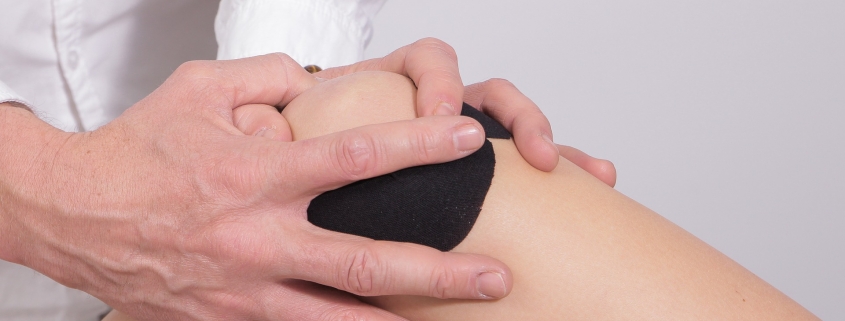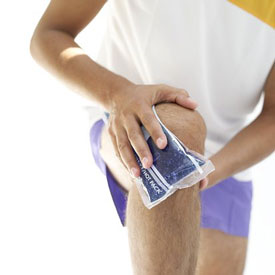‘Runner’s Knee’ is the nickname given to the condition Patellofemoral Pain Syndrome (PFPS). It is a common issue amongst runners, both recreational and competitive. Generally characterized by pain or discomfort where the kneecap (patella) rests on the thigh bone (femur), it can range from mild to severe in the level of pain that it presents with.
It afflicts almost twice as many women as men; this is thought to be due to the tendency of the female hip structure to be wider, resulting in more of an angle of the thigh bone from the hip to the knee. Younger runners also tend to be more affected although the reason for that is uncertain.
Biomechanical issues are often to blame but other likely cause are: tight hamstrings, poorly – or improperly – conditioned quadriceps, or other muscle imbalances.
Quadriceps that are too weak to support the patella can lead to improper alignment and tracking. Tight hamstrings can pull, placing pressure on the knee and causing pain and discomfort as well. Having a professional assessment, treatment and exercise prescription can help with these concerns. Adding stretching and strengthening exercises is a proven method to treat PFPS.
Symptoms
Some of the most common symptoms of PFPS are:
- Soreness or tenderness behind or around the kneecap, often around the center of the kneecap.
- Pain in the back of the knee.
- A sense of weakness or instability; like your knee may “give out”.
- Sharp pain in the kneecap when going up stairs or hills.
- Dull, aching pain with movement.
Prevention and Treatment
- Run on softer rather than harder surfaces if you can.
- Reduce your mileage and intensity if you are experiencing pain.
- Avoid downhill slopes and deep knee bending activity until the pain subsides
- Ensure that you are stretching properly and enough. If you aren’t sure about how to stretch or what muscles to pay attention to, speak to a professional.
- Strengthen your muscles and maintain the strength. Again, if you are uncertain where your imbalances are; talk to a sport medicine therapist, physiotherapist or certified personal trainer for assistance.
- Check out your footwear: if your shoes are older or worn, some attention here may make all the difference to your PFPS. Runners who put a lot of miles of their shoes need to replace them more often – remember, it’s not just how long you’ve had your shoes but how much you use them. Specialty running shops are great for advice on different types of shoes for a variety of needs and foot types.
- Consider orthotics and having a professional gait analysis done if new shoes don’t help.
- Have your technique assessed for movement imbalances. Having a Physiotherapist or Sport Medicine professional assess your gait (while you are actively running) can help to spot issues that you may not be aware of.
While Patellofemoral Pain Syndrome is a common and disruptive issue for many runners, it can be effectively prevented, managed and treated.
Happy and healthy running!



